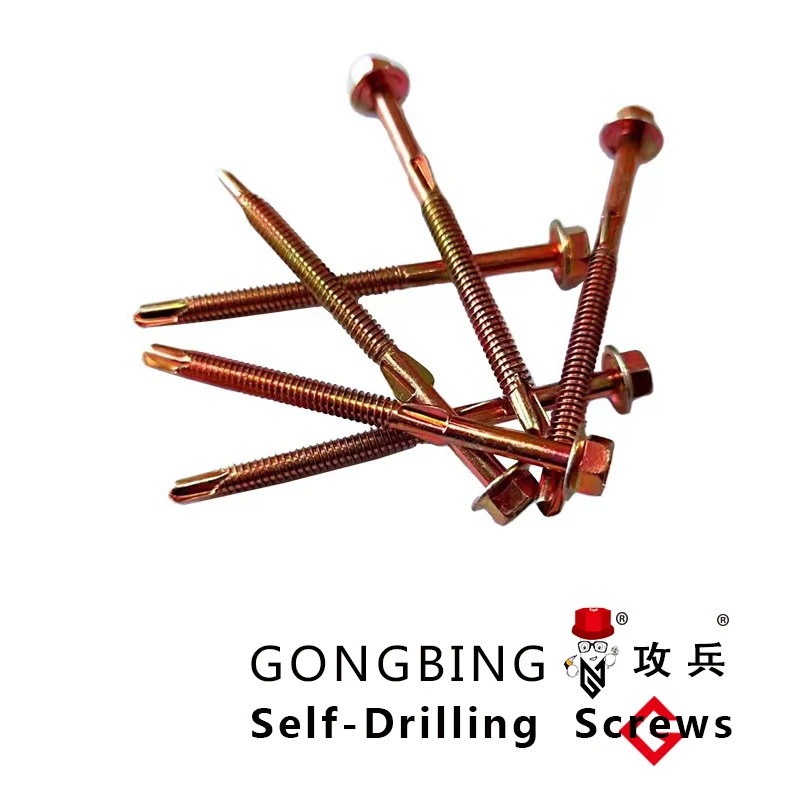Mar . 04, 2025 09:15
Back to list
masonry chemical anchors
Chemical anchors, often regarded as the unsung heroes of construction and engineering, play a crucial role in numerous structural applications. These specialized fasteners provide superior load-bearing capabilities in challenging environments where traditional anchoring methods may falter. Leveraging extensive experience in construction materials and engineering solutions, this article delves into the specific characteristics and applications of chemical anchors, illustrating their indispensability in modern infrastructure development.
The market for chemical anchors is diverse, with numerous manufacturers offering products catering to various construction needs. Brands like Hilti, Fischer, and Simpson Strong-Tie have achieved prominence due to their commitment to quality and innovation. These companies conduct rigorous testing to ensure their products meet global construction standards such as those of the American Concrete Institute (ACI) and the European Organization for Technical Assessment (EOTA). Experts recommend selecting chemical anchors based not only on the load requirements of the project but also on the environmental conditions and ease of installation. The choice of can become a strategic decision that affects the longevity and stability of the structure. For instance, choosing a fast-curing resin may accelerate project timelines while ensuring reduced downtime for heavy load applications. Trust in chemical anchor solutions has been solidified through decades of empirical evidence and research-backed performance analyses. Leading construction firms incorporate these reliable systems into their designs, recognizing their critical importance in maintaining the structural integrity of modern architecture. Additionally, user reviews and case studies consistently applaud the efficacy and reliability of chemical anchors, further cementing their status as a trusted component in construction projects worldwide. The future of chemical anchoring systems seems promising as advancements in material science continue to yield resins with improved mechanical properties and sustainability credentials. Innovations aimed at reducing environmental impact, such as low-volatile organic compound (VOC) adhesives, are becoming standard offerings, aligning with global efforts toward sustainable development in construction. In conclusion, chemical anchors are indispensable in the toolkit of modern engineering, offering unparalleled performance where traditional anchoring methods may not suffice. Their application spans the globe, securing critical infrastructure with unmatched dependability. As the demands of the construction industry evolve, so too will the technologies underpinning chemical anchors, ensuring that they remain at the forefront of anchoring solutions.


The market for chemical anchors is diverse, with numerous manufacturers offering products catering to various construction needs. Brands like Hilti, Fischer, and Simpson Strong-Tie have achieved prominence due to their commitment to quality and innovation. These companies conduct rigorous testing to ensure their products meet global construction standards such as those of the American Concrete Institute (ACI) and the European Organization for Technical Assessment (EOTA). Experts recommend selecting chemical anchors based not only on the load requirements of the project but also on the environmental conditions and ease of installation. The choice of can become a strategic decision that affects the longevity and stability of the structure. For instance, choosing a fast-curing resin may accelerate project timelines while ensuring reduced downtime for heavy load applications. Trust in chemical anchor solutions has been solidified through decades of empirical evidence and research-backed performance analyses. Leading construction firms incorporate these reliable systems into their designs, recognizing their critical importance in maintaining the structural integrity of modern architecture. Additionally, user reviews and case studies consistently applaud the efficacy and reliability of chemical anchors, further cementing their status as a trusted component in construction projects worldwide. The future of chemical anchoring systems seems promising as advancements in material science continue to yield resins with improved mechanical properties and sustainability credentials. Innovations aimed at reducing environmental impact, such as low-volatile organic compound (VOC) adhesives, are becoming standard offerings, aligning with global efforts toward sustainable development in construction. In conclusion, chemical anchors are indispensable in the toolkit of modern engineering, offering unparalleled performance where traditional anchoring methods may not suffice. Their application spans the globe, securing critical infrastructure with unmatched dependability. As the demands of the construction industry evolve, so too will the technologies underpinning chemical anchors, ensuring that they remain at the forefront of anchoring solutions.
Latest news
-
Weatherproof Plastic Expansion Anchors for OutdoorNewsJun.06,2025
-
Sustainability in the Supply Chain: Eco-Friendly TEK Screws ProductionNewsJun.06,2025
-
Load-Bearing Capacity of External Insulation FixingsNewsJun.06,2025
-
Double Head Bolts: Enhancing Efficiency in Industrial MachineryNewsJun.06,2025
-
Corrosion Resistance in Chipboard Screws: Coatings for Wholesale DurabilityNewsJun.06,2025
-
Butterfly Toggle Bolts : Enhancing Structural ResilienceNewsJun.06,2025
